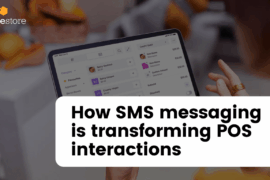According to a study done by StartUp Genome, 90% of startups fail. While there are a multitude of factors that can affect a startup’s success, one of the key things that they often overlook is branding and marketing.
Branding is not just reserved for household name products like Apple or Colgate. Even small businesses and budding startups need branding to build familiarity and credibility with customers and gain their trust.
As HubSpot founder Brian Halligan said, “It’s not what you sell that matters as much as how you sell it!”. Indeed, your startup may have the most revolutionary and creative product in the world. But if you don’t brand yourself properly, there’s no point.
However, we understand that not every startup has a ton of resources and manpower to spare for branding. This is why we are sharing top tips in this article to help you build a powerful brand identity for your startup – all without having to drop tons of bucks.
What is brand identity?
A unique brand identity is crucial in making you stand out. It also shapes how your customers will perceive your startup.
Imagine meeting a lady wearing colorful clothes for the first time. This lady also likes to make jokes and likes to laugh a lot. Just from those things, you can probably gather that she’s a bubbly and outgoing person.
It’s the same for your startup. Your visuals, brand voice, products, and how you treat your customers all make up your brand identity – which is essentially your personality that your customers will associate with you.
Think of it as Nike which is known for their athletic drive and passion. Or GoPro who are known for excitement and adventure. These popular brands have traits and personalities that are synonymous with them due to having a set brand identity.
Your brand identity will serve as the foundation of your overall marketing and business strategy. Without a brand identity in place, you won’t have any clear direction to guide you.
6 tips on creating a brand identity for your startup
A strong brand identity is what sets mediocre businesses apart from great ones. You can see it in successful startups such as Airbnb, DoorDash, Lyft, and Slack. They all have a distinct presentation and identity that sets them apart from their competitors.
You may think that you need millions to have great branding. But that’s not true. You just need to have the right strategy and have a clear direction. Some top tips are:
- Understand your customers
- Find your identity
- Create a logo
- Establish a visual identity
- Craft a brand voice
- Have a website
Understand your customers

Knowing your customers is the first and most crucial step. This is because your customers are a part of knowing your market demand, and also building your brand strategy.
Let’s start with market demand. According to studies, misreading the market demand is the number one reason why a startup fails. If you don’t fully understand your customers and their thought processes, you likely won’t see the correct market demand either.
Then your branding. If you don’t know them, how can you ensure that your branding strategy is one that they will find appealing?
Start with audience research. Who are your customers? What is their demographic? What are their psychographics – their hobbies, interests, goals, and values? What problems do they have? What products do they usually use? Are your customers looking for affordable products, or are they willing to splurge?
Then proceed with your market research. What product is in demand right now? Are you fulfilling a niche? Or is your product more generalized? How many will be your competitors? And what does your competitor do better or worse than you?
Gathering these insights doesn’t have to be expensive. You can use free Google Forms to do surveys or check your social media and website analytics to see your audience’s data. You can also track trending searches and keywords on Google Trends.
Find your identity

How do you find your brand identity? Some big brands hire a consultant or a marketing agency to brainstorm for a unique identity.
Of course, you can also do a simple free exercise instead. Write down your startup, your product, and your target customers on a piece of paper. Then come up with words associated with each of them.
This kind of mind-mapping technique can help you spot some common themes within all of them. This can be the starting point of your brand identity.
Of course, your market research and competitor research that you’ve done in the previous step should also give you an idea of what your brand identity should be.
Create a logo

Your logo is the face of your startup. It’s what your customers will usually see first and the element that they will associate with your business. 60% of customers will also turn down your product if they find your logo unappealing. So it is indeed crucial that you get your logo design right.
A well-crafted logo is simple yet memorable. It should also match your brand identity.
An example is Baskin Robbins. This ice cream brand aimed at kids has a colorful logo and uses a whimsier font to be more appealing to their customer’s tastes. Meanwhile, finance brand PayPal has a very sleek and clean look to symbolize its stability and security.
Creating a logo doesn’t have to be costly. You can find affordable graphic designers on freelancing sites. You can also DIY it with online logo maker tools instead.
Establish a visual identity

A clear and cohesive visual identity is needed to make your brand look more recognizable and familiar to your target audience.
Visual identity is composed of many things – your logo, color scheme, typography, art style, and photography style. Each visual element can also affect how your audience perceives you.
Let’s first discuss colors. Using a specific color scheme consistently can build brand recognition by 80%.
Think of popular brands like Coca-Cola, Starbucks, and IKEA. We bet you instantly thought of their colors just by reading their names, right? That is all because of their branding – they chose a distinct color scheme that makes them memorable and stand out against their competitors.
Now imagine Coca-Cola suddenly using a green and orange color scheme for one of their marketing materials. People will get confused and probably won’t recognize them. This is another aspect of branding – the need to consistently use your visual elements to build familiarity. If you change your colors every so often, your audience will find it difficult to recognize your brand.
Aside from consistency, another important factor to consider is the style and vibe of your elements. Ideally, they should match your brand identity for the best results.
Let’s take the photography style as an example. Dior Beauty, a luxury makeup brand, mainly uses black and white photographs to give that chic and sophisticated appeal. Meanwhile, Colourpop, a more affordable and teen-friendly brand, uses tons of bright neon colors in its shots. This enhances their bold and youthful image.
As you can see, each element of your visual identity needs to be inline with your brand identity. Doing so can help build your branding while also influencing how your customers will perceive your brand.
Craft a brand voice
Brand voice is the tone, style, and language of your written communication. From how you write your blog articles, to your website’s About page, to your social media captions – all of those are a part of your brand voice.
A great brand voice is in line with your brand identity. It should also be distinct and memorable enough that people can instantly associate your words with your brand.
Let’s take a look at Apple. They tend to write short, snappy, and direct-to-the-point sentences. They also use a lot of powerful action words. This makes their writing sound confident and driven, which is what their image is.
Next is Wendy’s. If you ever visit any of their social media pages, you’ll see that they reference a lot of trendy memes and slang. They also don’t mind making funny and witty jabs at their followers. This out-of-the-box social media strategy works well for them, considering that they target younger audiences who spend a lot of time online.
When creating your brand voice, think of it as making your startup as a real person. If you have this kind of personality, how will you speak? Will you be witty and outgoing? Will you be sweet and charming? And so on.
Have a website

A website serves as your office in the digital world. It’s where customers can find you or your products.
It also serves as a credibility check for a business. Have you ever searched for a business online and they didn’t have a website? You’ll think of them as a scam, right? That’s why a website is crucial for a startup, especially if you are just staring out. You’ll need all the legitimacy and credibility that you need.
Creating a website doesn’t need to be complicated and expensive as well. You can find multiple low-cost website builders online. These builders also offer a drag-and-drop editing feature so you don’t need any coding knowledge.
You can also hire a freelance web development team to do the work for you. Keep in mind though that you get what you pay for. If you scrimp too much, you may get a really wonky website that may just do damage to your reputation instead.
Why is a strong brand identity important?
As discussed above, a strong and unique brand identity has a lot of benefits for a startup. But to summarize them all, the key points are:
- To stand out in the market: Your identity will make you stand out from an oversaturated market. It conveys what makes you better than the others and gives reason to why your customers should choose you over them.
- To increase brand recall: A unique identity helps embeds you in your customer’s minds. It gives them a color, art style, or way of writing to associate you with.
- To build trust: As a startup, your main obstacle is establishing your legitimacy and credibility. Having a cohesive and well-crafted brand identity makes you look more professional, thus also trustworthy in your customer’s minds.
- To form an emotional connection: Contrary to popular belief, branding is not just making a pretty logo for vanity purposes. All of these elements also evoke an emotional response from a person. From the color that you use to your choice of brand voice, this all forms a “personality” of your startup. And this personality will decide whether your customer will find you relatable, aspirational, trustworthy, and so on.
Conclusion
As Virgin group founder Sir Richard Branson once said, “The way a company brands itself is everything–it will ultimately decide whether a business survives.”
Having a great product is not the end all be all of a startup. Proper branding and marketing play a huge role in determining your success.
It’s also crucial to do this while your startup is in the beginning stages. Don’t think of branding as something that you can put off till later. After all, branding is a long process. It takes 5-7 interactions before a person even remembers a business. By starting on your brand strategy now, you’ll set your startup for success down the line.




